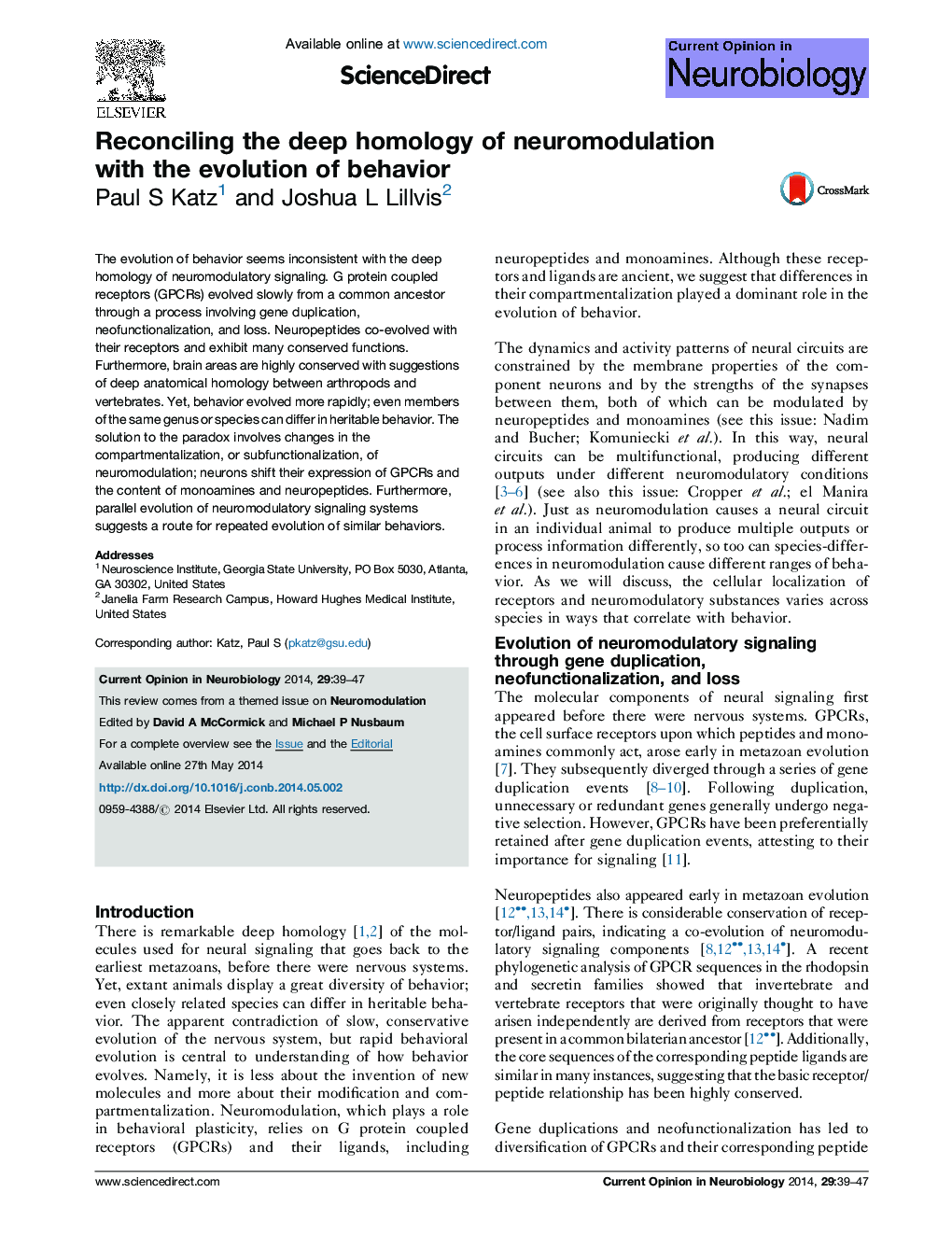| Article ID | Journal | Published Year | Pages | File Type |
|---|---|---|---|---|
| 4334193 | Current Opinion in Neurobiology | 2014 | 9 Pages |
•Neuromodulation mediated by G protein coupled receptors (GPCRs) alters behavior.•GPCRs evolved slowly through gene duplication, neofunctionalization, and loss.•Behavior evolved rapidly through differential compartmentalization of signaling.•Similar behaviors evolved via parallel changes in neuromodulation.
The evolution of behavior seems inconsistent with the deep homology of neuromodulatory signaling. G protein coupled receptors (GPCRs) evolved slowly from a common ancestor through a process involving gene duplication, neofunctionalization, and loss. Neuropeptides co-evolved with their receptors and exhibit many conserved functions. Furthermore, brain areas are highly conserved with suggestions of deep anatomical homology between arthropods and vertebrates. Yet, behavior evolved more rapidly; even members of the same genus or species can differ in heritable behavior. The solution to the paradox involves changes in the compartmentalization, or subfunctionalization, of neuromodulation; neurons shift their expression of GPCRs and the content of monoamines and neuropeptides. Furthermore, parallel evolution of neuromodulatory signaling systems suggests a route for repeated evolution of similar behaviors.
